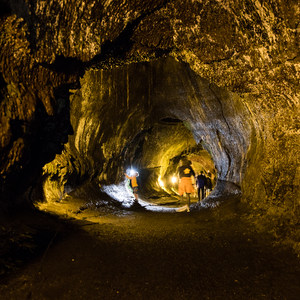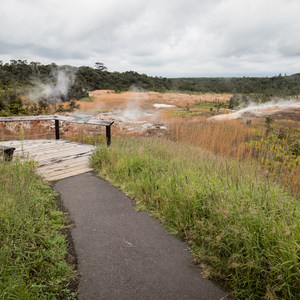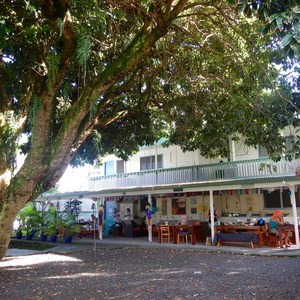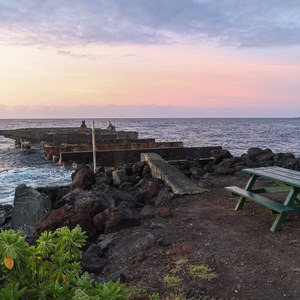Plenty of visitors make room for the popular Devastation Trail when planning a busy itinerary in Hawai'i Volcanoes National Park, but this walk to Keanakāko'i Crater, which shares a parking lot with the Devastation Trail, is often overlooked. This is a shame, because the rewards at the end of the hike are perhaps more impactful than the views of Kīlauea Iki from the Devastation Trail. As you stand at the end of this hike with the massive, 600-year-old Keanakāko'i Crater to your left and the vast wasteland caused by the very contemporary Kīlauea eruptions to your right, the sense of immersion into this blighted landscape is palpable. Chances are good that you'll see it and smell it feel it in your lungs, too; the reason this road was never reopened following a destructive eruption in 1974 is that the miasma of sulfur dioxide that constantly seeps from the Halemaʻumaʻu Crater in the Kīlauea Caldera is a persistent feature of this area. In fact, this road was closed to all access until 2012, when the National Park Service began using specialized air quality monitoring equipment that allows them to more precisely forecast the danger in the area.
The Keanakāko'i Crater is 115 feet deep, and visitors get to enjoy a vertiginous view into the crater from the safety of the road (resist the temptation to climb around the rim...it is both prohibited and really dangerous). Hawaiians extracted an especially tough kind of basalt from this crater for use on adzes, tools that were used for canoe and shelter construction, and Keanakāko'i translates as "cave of adzes." On the side of the road opposite the crater there is a roped area where it is safe for visitors to walk off road and get a closer view of the volcanic terrain, which appears at once primordial and otherworldly. In a modern world where environmental devastation is so commonly human caused, it feels a little odd to experience an area that is so naturally hostile to most organic life, but it very much is.
The impressive payoffs of this hike must be weighed with the work it takes to get to the end. The walk is just under a mile each way, and it is all on a two-lane road without much shade. This is a hot and exposed walk, and it would be easy to overheat, so bring plenty of water and sun protection. While it is a friendly surface for children and strollers to use, the distance may feel punishing on the way back. Additionally, the road doesn't exactly make for dynamic hiking, so you'll want to figure out ways to stay entertained along the way. One worthy pursuit is to check the sides of the road for Pele's hair, which are strands of lava that drift through the air like spiderwebs before landing on the ground, only to glint in the sunlight as you walk by.


























Comments
Sign In and share them.